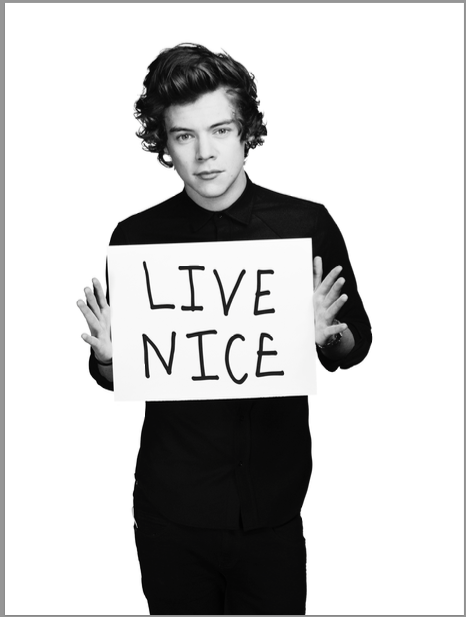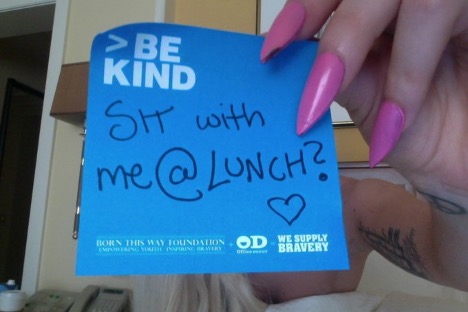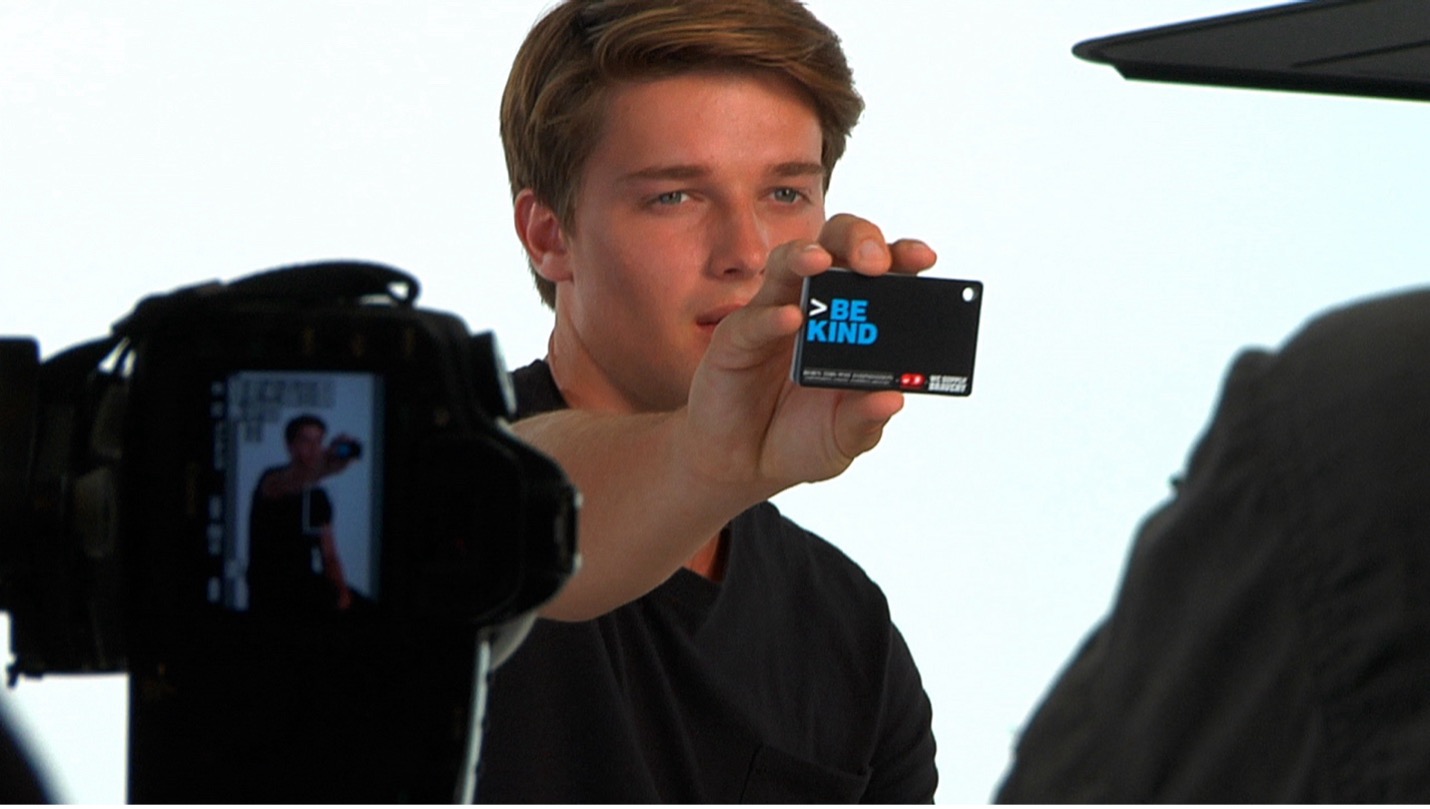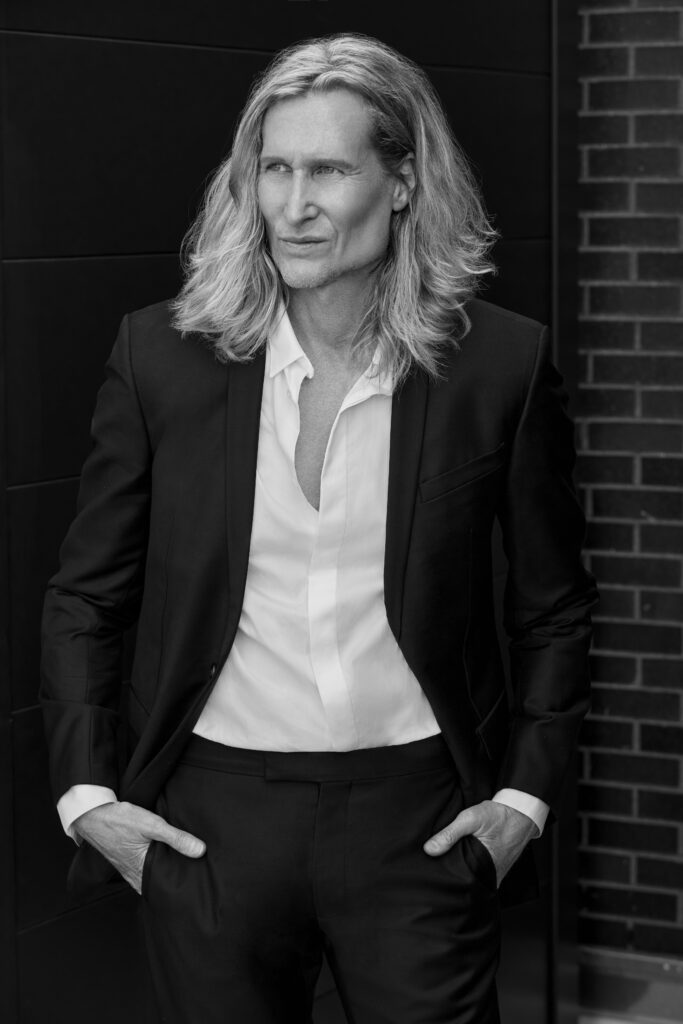CREATING KINDER SCHOOLS.
A decade ago, Scott Woodward, a fashion and luxury marketing industry veteran and founder of New York-based brand marketing agency, SEW Branded, had a thought while working with then client, big box school supply retailer Office Depot, to begin a conversation with parents, teachers and youth to encourage creating more kindness in schools across America. He thought this might be an anecdote to help curb bullying in schools and decrease the much written about suicide rate among teens who were exposed to cruel behavior by other students, especially in high schools.
Woodward has long been a pioneer of cause marketing and encouraging companies with the most powerful brands in the world take their marketing messages a step further and align them with a cause, which can be incredibly beneficial to society. When done properly, cause marketing can change the world and help to move that cause in a positive direction whether it is health-related, environmental, humanitarian, or social in nature.
With Woodward’s help a decade ago, Office Depot, a leading national retailer, dedicated its back-to-school effort two consecutive years to raising awareness for anti-bullying as it specifically relates to parents, teachers, and students with a revolutionary campaign with worldwide music phenomenon One Direction in a themed campaign called “1D + OD Together Against Bullying.” It was designed by Woodward’s SEW Branded to raise awareness for anti-bullying, culminating in educational programs launched in over a thousand schools across America.

PHOTO COURTESY: SEW BRANDED. HARRY STYLES IN THE LIVE NICE CAMPAIGN.
By embracing the anti-bullying cause, Office Depot is aimed to create more positive environments for three of its key consumers. First, they want to enable teachers to have more positive classroom and teaching experiences. No one can deny that teaching is a tough profession. Reducing and possibly eliminating bullying at school will take one more stress factor off teachers’ already full plates. Second, the retailer is helping to ease parents’ concerns about what their children may be subjected to at school. Many parents wonder, “Is John being teased?” “Is Jane withdrawn because someone is tormenting her?” Schools should be safe places for kids, so building awareness about anti-bullying can help protect kids and make parents feel less anxious. Finally, the company hopes to empower youth to be true and brave, whether experiencing bullying themselves or witnessing it. The adage “sticks and stones may break my bones but words will never hurt me” is for the most part not the norm.
Lies, gossip, name-calling, alienation, verbal abuse, and humiliation leave lasting and needless scars. When youth are empowered with knowledge of how to handle a bully and a situation, they are more apt to put an end to it and its negative effects. It’s simple, as the basic tenet of the program was to treat others how you’d like to be treated. Harry Styles, a member of One Direction states it simply, “Live Nice, because no one likes people who aren’t nice.”
Having that kind of an impact on the world is something that a good cause-related campaign can begin to achieve. Office Depot’s and One Direction’s Anti-Bullying cause campaign can be paradigm changing given that we’ve all been exposed to bullying at some point–whether witnessing it or experiencing it firsthand. Realize, though, that bullying today is far worse than it was a decade ago, primarily due to the internet and social media. It used to be that students got bullied in the hallway or at a school sporting event and only a few others might have witnessed it, resulting in a lower (albeit unfortunate) embarrassment factor.
Today, the potential for many more to witness cruel acts exists, as they can be virally spread using social media, on Facebook and Twitter in particular. We’ve recently seen too many stories in the media involving kids who have committed suicide as result of bullying that extends from the school to various online communities. In an instant, the recipient of bullying behavior is humiliated in front of thousands and often feels there is no escape from it. Someone once told me the worst possible experience is to be publicly humiliated. The Weinstein film, Bully, from years ago featured a young boy named Alex who was subjected to needless humiliation daily and it is and was heart wrenching to witness.
Using One Direction’s powerful platform and voice with youth, Office Depot’s alliance with them to raise awareness about the negative effects of bullying will hopefully foster change. They are also creating world-class educational seminars through their foundation that will be rolled out in schools across the U.S. The message of these is simple, “Live Nice.” The retailer has chosen to create empowering words and phrases that encourage students to stop and think about how they treat each other. They want everyone to know that there are consequences to not treating others kindly and with respect. Unfortunately, not everyone is or acts bravely when it comes to combatting bullying. As such, much of the messaging is about raising awareness to be true to yourself and others and to speak out on behalf of others being treated cruelly.
Being kind is a rather basic human principle. And it’s easy to live the message when you just stop and think before you say something that might not be so nice. To help reinforce this cultural shift in behavior, the messaging includes words and phrases like “live nice,” “live original,” and ‘live unique” as part of the campaign. The goal was to encourage youth to be themselves and to live their lives without the fear of harassment or cruelty.
Prior to the successful One Direction campaign that won the Clio award for Woodward and his team, he conceived a collaboration with Lady Gaga’s Born This Way Foundation, featured similarly positive messaging with ”be statements” like “Be Kind and Be Yourself’ under the campaign tagline “OD+ BTWF s We Supply Kindness.”

PHOTO COURTESY: SEW BRANDED. LADY GAGA PROMOTING KINDNESS ON TWITTER
The real question to ask is, “Is this type of marketing, and in particular this effort, helping to shift behavior? The answer thankfully seems to be yes, because whenever you attach a voice as powerful as Lady Gaga or One Direction to a cause, you immediately have the attention of their entire fan base, thereby generating momentum and having it shared the real question to ask is, “Is this type of marketing, and in particular this effort, helping to shift behavior?
The answer thankfully seems to be yes, because whenever you attach a voice as powerful as Lady Gaga or One Direction to a cause, you immediately have the attention of their entire fan base, thereby generating momentum and having it shared with and by others, shifting behavior in a positive way. In fact, the response to both consecutive campaigns have been positive from parents, teachers, experts, and youth alike. The millennial and generation Z segments are smart and savvy and appreciates authenticity when you begin a conversation with them on something as important as this cause. Likewise, the press (both traditional and social media) has positively embraced the effort and has been key to spreading the message.
Additionally, if we look at the research on the impact of cause marketing to a company’s bottom line, we see that 47 percent of consumers have bought a brand at least monthly that supports a cause, and over the years, consumers have taken increased action on behalf of brands that are tied to a cause. In a sense, cause marketing is good for the cause, for the community, for the consumer, and for the company and its brand(s). A win-win is achieved for everyone.
Office Depot was one of many corporations that has embraced chosen causes tied to marketing campaigns. Target is a leader in embracing the importance of education with youth as one of their primary causes. Their current commercial featuring high school students opening their college acceptance letters gives me goose bumps and takes me back to the feeling I bad opening my own and embarking on that chapter in my life. It’s truly uplifting. Many companies now actively embrace environmental causes to help prolong the life of our planet. Dannon, Ralph Lauren, and Estee Lauder have all done extraordinarily powerful cause marketing around breast cancer awareness and research.
American corporations have been extremely generous and successful in garnering positive attention and action for specific causes-proof that they can change society for the better and use their powerful platforms for good. Creating brand imaging tied to a meaningful cause is always good and helps the brand itself and its audience.
So, is it powerful? Most definitely. Will it change the culture with youth? we hope so. In many ways, although the campaign is about anti-bullying and raising awareness about its negative effects, it’s really about humanity and how we ultimately choose to treat each other. It’s about the bigger picture of simply being able to be yourself in a safe and kind environment without negative consequences. Together, we can “be kinder” and “liver nicer” to make a powerful difference in our schools and now, post-pandemic, being talked and written about as important in our work lives as well.
A CULTURAL SHIFT TOWARD KINDNESS EXTENDS TO THE WORKPLACE.

PHOTO CREDIT: COURTESTY OF SEW BRANDED. PATRICK SCHWARZENEGGER FOR BORN THIS WAY FOUNDATION’S KINDNESS CAMPAIGN AND PSA
Decades of research support it: Kindness is good for everyone, whether at school, work or amongst friends and family. When anxiety is high and morale is low, as it is today amidst war and economic uncertainty, kindness isn’t a luxury — it’s a necessity.
As the years have unfolded, these early initiatives have evolved significantly. The post-pandemic era has seen a profound transformation, where the drive to foster empathy and compassion in educational settings has morphed into a workplace imperative. This cultural shift has been more than just about promoting kindness; it has been about delineating the nuanced distinction between being kind and merely being nice.
Being nice, often a veneer of politeness masking true sentiments, has been eclipsed by the authentic and profound embodiment of kindness that now permeates our professional and personal relationships. The difference is palpable: it’s the contrast between a perfunctory smile and a true expression of empathy, between courteous gestures and genuine efforts to alleviate another’s hardships.
In the complex theater of the workplace, where personal ambition and competitive drives are the norm, the application of kindness over niceties has become a defining element in shaping the trajectory of professional relationships. The Harvard Business Review has highlighted the importance of this guiding principle, emphasizing its critical role in fostering a positive work environment. It’s no longer merely a moral virtue but a fundamental component of organizational culture and leadership.
Adding to this conversation, a recent article on CNN.com has underscored the tangible health benefits linked to kindness. The practice of kindness emerges not only as a moral choice but also as a healthful one, with its ability to mitigate stress and its effects on the body. The release of oxytocin during kind acts, for example, is associated with cardiovascular health benefits, such as the lowering of blood pressure, due to its role in promoting vasodilation.
Woodward’s groundbreaking endeavors have laid the foundation for a significant shift in perspective, one that continues to influence our contemporary world. His efforts remind us of the transformative power of moving beyond superficial exchanges to fostering genuine kindness. In doing so, his initiatives have encouraged individuals and communities to reevaluate their actions, to choose authenticity and compassion in their daily lives.
The ethos of kindness is more relevant than ever in 2025, as individuals and organizations alike navigate the challenges of a rapidly changing world. The legacy of Woodward’s campaigns and decade long movement that constantly is evolving and spreading to new areas is a testament to the enduring impact of a vision that once sought to reshape the conduct of students in schools and has now expanded to reshape the culture within our workplaces and communities. It stands as a reminder that the principles of kindness, once nurtured, can grow to become guiding lights for society at large, illuminating a path toward a more empathetic and connected world.
DIFFERENTIATING BEING KIND VS. BEING NICE
Woodward’s initial back-to-school campaign was themed around Being Kind and the second follow-up campaign was about Living Nice. Being nice involves being polite and cordial to others, while being kind can be defined as going an extra step with acts so valuable and intentional that your very own mental and physical health can be benefitted for doing things that uplift and benefit others. Maybe we can all think about both in the future decades to make our world a better place to learn, work and live, especially in the midst of two unkind wars.
#BEKIND #LIVENICE

